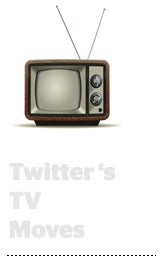 If there was any doubt of Twitter’s impact on TV ratings and viral viewership, new findings from Nielsen may help dispel it.
If there was any doubt of Twitter’s impact on TV ratings and viral viewership, new findings from Nielsen may help dispel it.
Nielsen, which recently ran time series analysis of 221 broadcast prime-time episodes through Nielsen SocialGuide, found that Live TV ratings played a statistically significant role in related tweets for 48% of the episodes. Conversely, the analysis also found that 29% of the episodes showed a volume of tweets had resulted in statistically significant changes in Live TV ratings. Clive Granger, a Nobel-winning economist who died in 2009, originally developed the analysis methodology.
As previously reported by AdExchanger, TV- and media-ratings company Nielsen first teamed up with the social platform last fall when it launched Nielsen Brand Effect for Twitter. Since then, Twitter has reported that brand beta testers reached 95% higher message association with consumers who engaged with a Promoted Tweet and were also exposed to a related TV campaign.
Now Nielsen, through a Twitter Causation Study scheduled for release today, has found that spikes in TV ratings can be correlated to an increase in volume of tweets. On the flip side, an uptick in tweets has shown evidence of a boost in TV ratings, according to a statement from Paul Donato, Nielsen’s chief research officer.
According to a Nielsen spokesperson, “time series analysis” enables a user to take minute-by-minute Tweets and minute-by-minute live TV ratings and “predict the next set of what a time series might look like based on the time series data itself.”
Ali Rowghani, Twitter’s COO, said new research by Nielsen proves that “Twitter is a complementary tool for broadcasters to engage their audience, drive conversation about their programming and increase tune-in.”
Naturally, understanding the territory between the two is on marketers’ minds. Early brand users of Nielsen Brand Effect for Twitter include Holiday Inn Express, Adidas, Jaguar and Samsung, all names that have augmented second-screen campaigns with traditional direct-response tactics.











